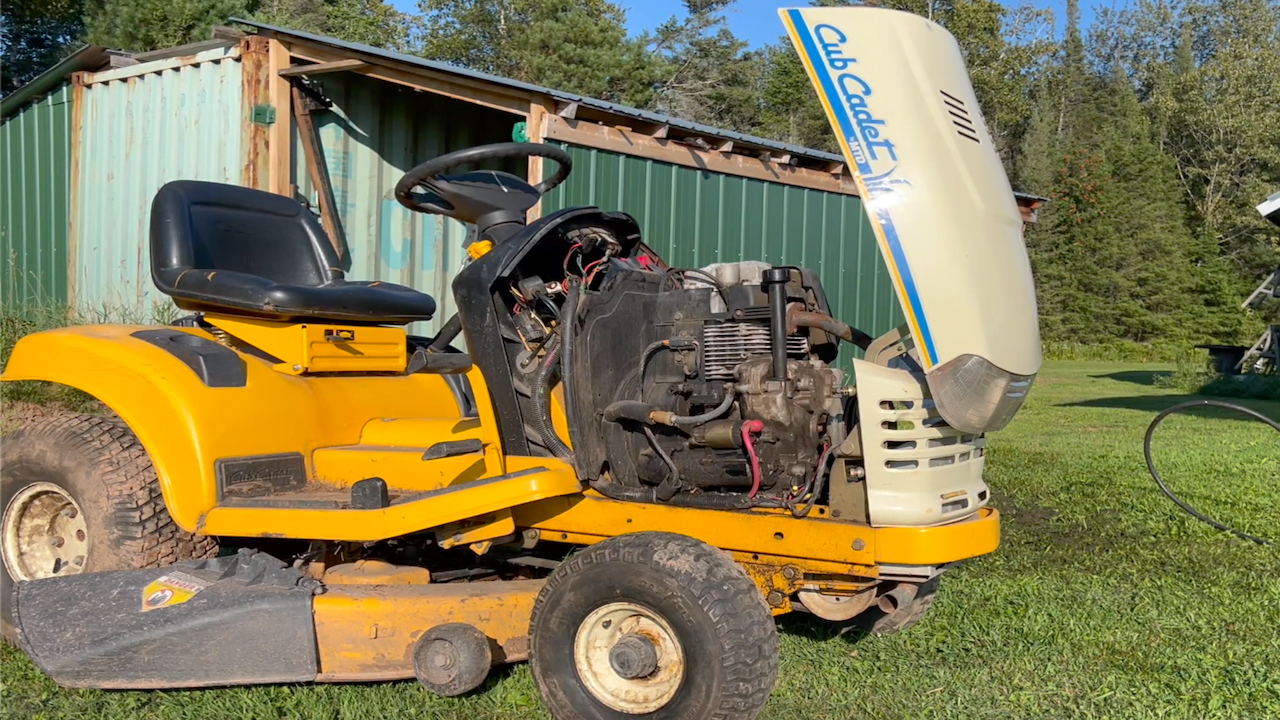How do you clean a riding lawn mower gas tank? Well, the short answer is: it depends. Mainly, it depends on what it has become contaminated with; therefore, the method you choose to clean it will change.
Sorry if that answer was unsatisfying, but it’s true. Let’s talk about some of the more common contaminants and how you can go about cleaning them.
Common Gas Tank Contaminants
Old Fuel
This has got to be the most common tank contaminant. Old gasoline tends to become more viscous. As it ages, it becomes more syrupy and begins to clog the carburetor passages and even the fuel lines. If it’s sitting in the tank, it can even clog the pickup lines.
Dirt
Dirt and or debris can enter the gas tank every time you refuel the tank. Every time the cap comes off, there’s an opportunity for dirt and sediment to enter. Dirt will eventually plug a carburetor jet and prevent efficient firing.
Water
Water can enter the gas tank when the cap is off just like dirt. Furthermore, if a riding lawn mower is left outside in the elements, water can enter the tank through the cap vent. Water in the tank will eventually make its way to the carburetor and prevent efficient firing.
Rust
Rust is most commonly found in older machines that have metal gas tanks. If water makes its way into the tank it will eventually cause the tank itself to rust. Once rusted, the particles will behave much like dirt.
How to Clean a Riding Lawn Mower Gas Tank
Now that we’ve talked about some common contaminants, how do we go about cleaning them?
Dirt
For dirt, the easiest method is to use compressed air. First, make sure that the tank is dry. Using compressed air can help dry it out, but it might take awhile.
Remove the fuel line that comes from the tank to the carburetor so the debris can exit the tank.
Then, remove the gas tank cap and stick in a compressed air nozzle. Wrap a rag around the nozzle to effectively seal the rest of the opening.
Once the air is charged into the tank, the rag helps to prevent air from coming back out the opening. This pressurizes the tank and forces the air and debris to exit through the smaller diameter pickup.
Water
For water, you’re going to want to drain the fuel tank entirely. Remove the fuel line from the carburetor and drain the tank. Then, use compressed air as in the aforementioned section to dry the tank out. Or, you can use a rag or paper towels with a long nose pliers to absorb the moisture.
Be sure to remove the carburetor bowl to drain the water in there too.
Rust
For rust, it kind of depends on the severity. If it’s minor, make sure the tank is dry and then you can clean it in the same manner as dirt.
For more severe rust, you can use a “rust converter.” A rust converter is basically a liquid acid that reacts with the iron oxide (rust) to turn it into essentially a primer. This turns into a protective layer of sorts.
For best efficiency, try to remove as much flaking rust first. If you can remove the tank from the machine, put some nuts and bolts in it and shake it around. This will help to brake up anything that can flake off.
Then, use the compressed air method to eliminate the dust and debris, and then treat with the rust converter.
Old Fuel
I mention old fuel last even though it’s the most common. That’s because it can be a pain to clean depending on the viscosity.
If the fuel is old, but relatively *new, you might be able to simply drain it. Assess the color as it’s draining in order to gauge the age of it.
The older it is, the more yellow and eventually brown it will start to turn. From here, put some fresh fuel in the tank and slosh it around to flush the old fuel out.
Obviously, you need to remove the tank to do this.
If the gas is older and thicker, you might have to use some solvents to help break it up. Things like paint thinner, mineral spirits or acetone can help break it up.
Then, flush it with fuel, rinse it with water, and blow it dry with compressed air. If it’s still not breaking up, repeat the process with solvent and add the bolts to the tank to help break it up.
Essentially, you just have to keep repeating this process until the tank cleans up.
Recap
There you have it; common contaminants and how to clean a riding lawn mower gas tank. Did I forget something? Let me know in the comments below!
As an Amazon Associate I earn from qualifying purchases.

One thought on “How to Clean a Riding Lawn Mower Gas Tank”